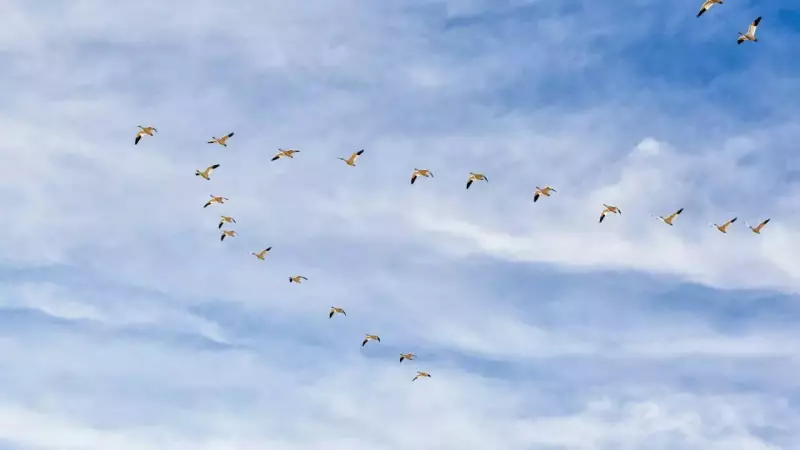
Have you ever looked up at the sky during migration season and wondered why birds fly in that perfect V-formation? For centuries, this aerial phenomenon has fascinated observers, and now scientists have uncovered the remarkable science behind this natural spectacle.
The Energy-Saving Secret
Researchers have discovered that flying in a V-shape isn't just about looking pretty—it's a sophisticated energy conservation strategy. When birds fly in this formation, each bird benefits from the upward-moving air generated by the bird in front of them. This creates a "lift" effect that significantly reduces the energy needed to stay airborne.
How the Aerodynamics Work
The science behind this is similar to how airplanes conserve fuel. When a bird flaps its wings, it creates rotating vortices of air that trail behind its wingtips. The bird following behind positions itself to catch the upward-moving part of this vortex, essentially getting a free ride.
This aerodynamic advantage allows birds to:
- Reduce energy expenditure by 20-30%
- Fly longer distances without tiring
- Conserve crucial fat reserves during migration
- Maintain higher average speeds
Teamwork Makes the Dream Work
What's even more remarkable is how birds coordinate this formation. Research shows that birds take turns leading the formation because the front position requires the most energy. When the lead bird gets tired, it drops back, and another takes its place.
This rotating leadership system ensures that no single bird bears the brunt of the energy expenditure for too long, making migration more efficient for the entire flock.
Beyond Energy Conservation
While energy savings are the primary benefit, scientists note that the V-formation also serves other purposes:
- Communication: Birds can maintain visual contact and communicate more easily
- Navigation: Following experienced leaders helps younger birds learn migration routes
- Safety: The formation makes it easier to spot predators and react as a group
This research not only solves a long-standing mystery but also provides insights that could inspire more efficient aircraft formations and drone technologies. Nature continues to teach us valuable lessons about efficiency and teamwork!





